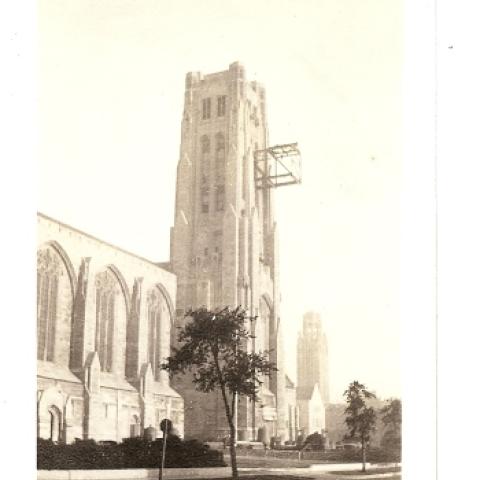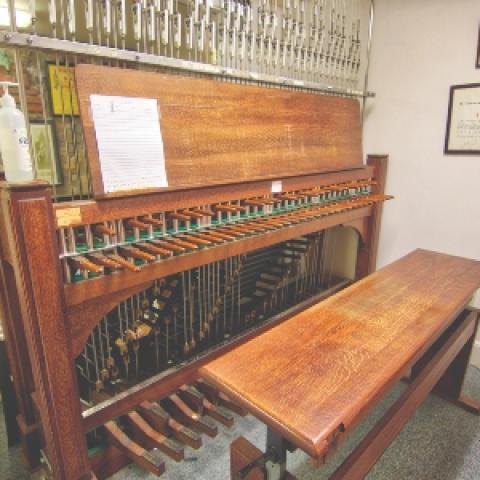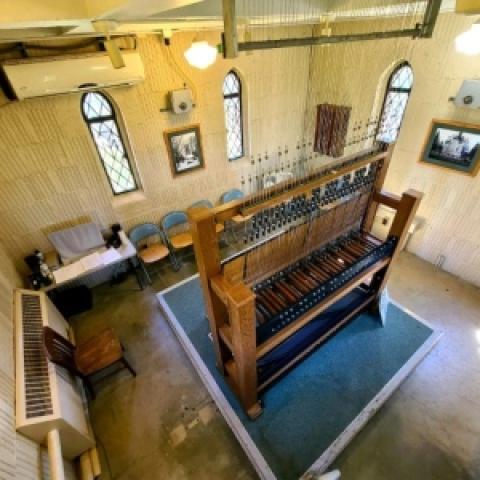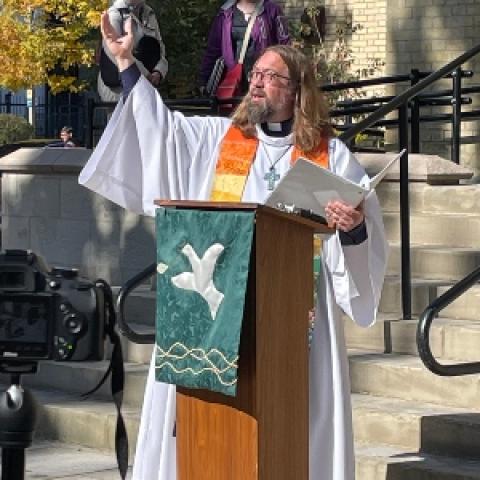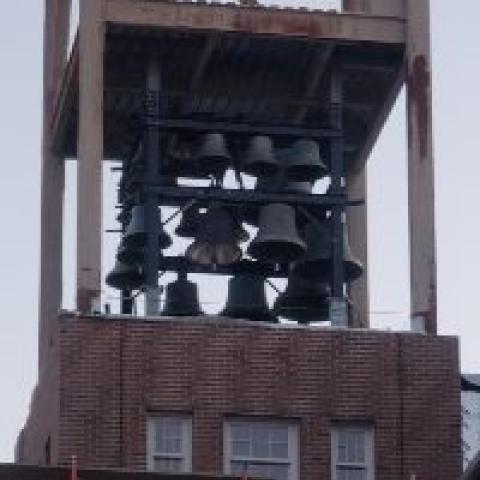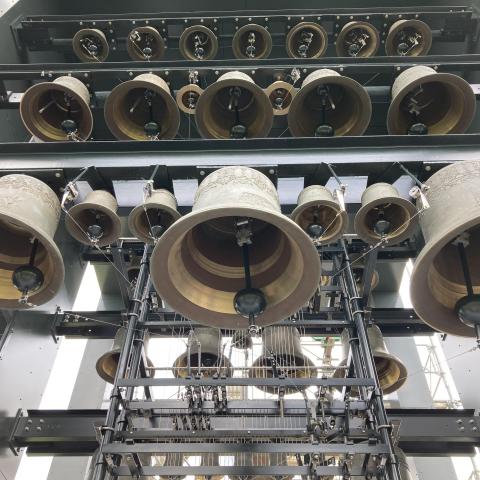
Carillon Profile: Walter F. Tilton Memorial Carillon, Norwood, Massachusetts
The Walter F. Tilton Memorial Carillon in the town of Norwood, Massachusetts, is being restored, carrying on its iconic status in the community. The entire transmission system, from the keyboard wires to the clappers, was replaced to create a more modern, playable instrument. The updated design retained the legacy roller-bar system and the original keyboard, although the keyboard was reconditioned and outfitted with modern parts. The steel bell frame had rusted due to decades of exposure, so it was treated and repainted to withstand many more decades. The B. A. Sunderlin Bell Foundry of Ruther Glen, Virginia, is carrying out the carillon work and will finish the project this spring.
Notable figures in the North American carillon community and local community have stewarded the instrument for decades. The late Sally Slade Warner, renowned for her deft arrangements and moving performances, played on the instrument for decades until her retirement in the early 2000s. Slade Warner performed repairs and renovation work herself in the 1980s to make the instrument more playable. Bernie Cooper, assistant town manager, was also critical in taking care of the instrument. He worked with Slade Warner to bring the instrument back into better working order, and he ensured financial support for the carillon until his untimely passing in January 2021. He and Slade Warner started the annual summer carillon concert series in the 1980s.
Another notable figure is Lee Leach, a current carillonist. Leach had noticed the extensive rust on the bell frame and the difficult playability as early as the 1990s, when he had first learned to play the instrument. When the state of Massachusetts passed new legislation that made local taxes and state appropriations available to communities to fund preservation projects, Leach and Cooper set to work and applied for a grant from the Community Preservation Act to fund the carillon’s restoration, which was approved by the local committee and then awarded by the state.
The Walter F. Tilton Memorial Carillon is one of the few municipal carillons in North America. The funds for the instrument were donated by local leader Walter F. Tilton to recognize all the Norwood residents who had fought in past wars. The fifty-bell instrument was cast and installed by Gillett & Johnston of England and dedicated on November 11, 1928, the tenth anniversary of Armistice Day. The carillon is located within Norwood’s Memorial Town Hall and is managed by the municipality. Three of the bells were replaced since the carillon’s inception, but otherwise no major work was done until now.
The carillon will continue in its summer carillon concert series in 2022, inviting guest recitalists from near and far. The traditional informal ring by local carillonists will take place on the afternoon of the Fourth of July. These musicians will play on occasion, including Margaret Angelini, Anton Fleissner, Jennifer Herrmann, Lee Leach, Thomas Lee, Christina Meyer, Margaret Pan, and John Whiteside. The anticipated date for its first recital is May 22, 2022, when Norwood will honor its veterans as part of its 150th-anniversary celebration of its founding.
—Kimberly Schafer, PhD, Carillonist and campanologist, Chicago, Illinois
All photos credit: Lee Leach

